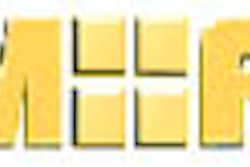A new report published by the industry group America's Health Insurance Plans (AHIP) of Washington, DC, criticizes the recent growth in spending on imaging services and proffers several solutions for reining in imaging utilization.
Entitled "Ensuring Quality Through Appropriate Use of Diagnostic Imaging," the report cites published data to claim that 20% to 50% of diagnostic imaging exams fail to provide information that improves patient diagnosis and "may be considered redundant or unnecessary." It cites a McKinsey Global Institute report that claimed that unnecessary CT and MRI scans cost the U.S. healthcare system $26.5 billion.
The report goes on to state that of the $2 trillion the U.S. spends annually on healthcare, spending on medical imaging is approaching $100 billion a year and is expected to double in the next four years. Other estimates are that imaging costs are close to becoming 10% of total healthcare costs.
The cost of imaging services is growing faster than prescription drug costs, the report states, with some payors reporting 18% to 20% annual growth in imaging services payments from 2002 to 2004, versus 6% to 8% for prescription drug costs.
Growth has occurred both in the number of imaging centers, which rose from 3,000 in 1999 to 5,760 in 2005, and procedure volume, which grew 40% from 2000 to 2005 and is projected to grow another 26% by 2008.
The report blamed physician office-based imaging as a major contributor to growth in imaging utilization and also pointed the finger at leasing arrangements that give referring physicians a financial interest in ordering more imaging tests. Also singled out were defensive medicine and direct-to-consumer advertising that creates demand for certain imaging tests.
To curb growth in unnecessary imaging, the AHIP report touts the use of radiology benefits management (RBM) plans. Published reports indicate that RBM programs can achieve a 10% to 20% reduction in actual expenditures, while mature programs can hold annual cost growth to 5% to 7%, the report states.
Other tools that can be used to reduce imaging utilization include physician privileging, in which certain types of training and competency are required to use and interpret radiology studies, and evidence-based guidelines that are used when analyzing physician orders for imaging studies.
Related Reading
GAO report on overutilization draws industry ire, July 15, 2008
Copyright © 2008 AuntMinnie.com



















